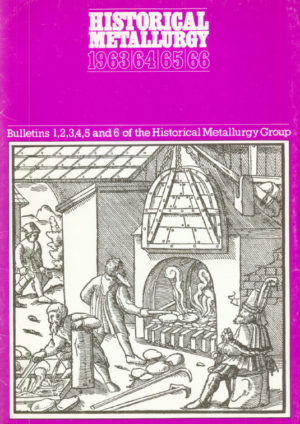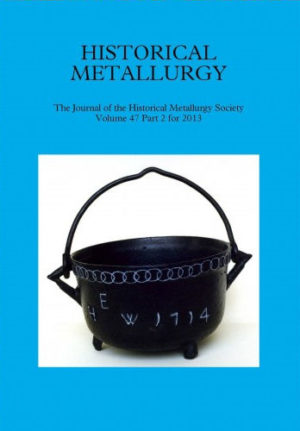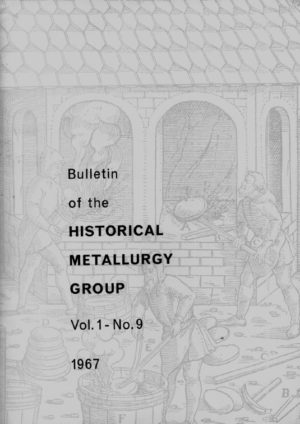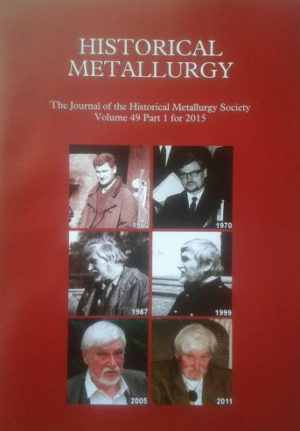Journal Contents
Wrought and quenched, and cast high-tin bronzes in Kerala State, India
Sharada Srinivasan and Ian Glover
Pages 69-88
Binary high-tin bronze alloys have been recorded in SE Asian antiquity, and it had been reasonable to regard known Indian examples as imports from tin-rich SE Asia due to the scarcity of tin in India. However, this paper puts forth new evidence of ancient and surviving high-tin bronze working in the Indian subcontinent. It challenges the above assumption and indicates that the indigenous development of high-tin bronze working, and exploitation of the sparse tin deposits in ancient India, cannot be ruled out. Surviving traditions from Kerala in S India are documented of the manufacture of vessels and instruments of wrought and quenched high-tin bronze, and mirrors of cast high-tin bronze. New metallurgical evidence is presented for the continuous use of artefacts of high-tin bronze in the subcontinent from the 1st millennium BC to the present day, particularly in South India, which is corroborated by literary and iconographic evidence from the historical period.
Mail links from the de Soto entrada of 1540
Martha Goodway
Pages 89-93
Among 22 links recovered in Florida from Hernando de Soto’s expedition, four were of tin bronze and the remainder of iron. Most of the iron links were completely mineralized but sectioning revealed remnant areas of sound metal in eight links. The microstructures indicated that the links were fabricated from drawn wire by rivetting. There was no conclusive evidence that high phosphorus iron had been selected for the wire.
Late Iron Age metal working at Nqoma, Tsodilo Hills, northwestern Botswana
D E Miller and N J van der Merwe
Pages 94-103
This paper describes aspects of the metal working technology employed during the 17th-19th centuries AD at the site of Nqoma, excavated by James Denbow and Edwin Wilmsen, in NW Botswana. A detailed metallographic analysis of eleven artefacts showed that the indigenous Late Iron Age fabrication technology did not differ significantly from its Early Iron Age counterpart. Forging, and possibly smelting, of iron took place at the site. Inhomogeneous bloomery iron was used in conjunction with scrap metal to forge items of jewellery and small tools in an oxidising hearth. The forging technique was generally poor, with surface oxide scale incorporated in welds, and with no control over subsequent heat treatment. Copper was worked in the same way, leaving the metal in its annealed state.
The Lads of Snowdenhill and the New Jersey Steel Trade
Philip Hansen and Geoffrey Tweedale
Pages 104-112
Utilising a collection of family letters, the article looks at the role of English immigrants in the emergence of the American special steel industry, cl 850-1914. Specifically, it chronicles the careers of the Illingworth brothers – particularly Benjamin and John – and their role in the foundation of the New Jersey steel trade. The activities of the lUingworths at pioneering firms, such as the Jersey City Steel Works and Atha & Illingworth, demonstrate the dependence of the US special steel industry on English expertise. The remarkable upward social and economic mobility of the lUingworths is also highlighted.
Copperworks no 2 in Kaifeng, China
Donald B Wagner
Pages 113-116
The paper is an eyewitness report of present day copper smelting using a small blast furnace.
The study of early and traditional metallurgy in India: a review of some recent publications
Paul Craddock
Pages 117-
The study of early metallurgy in India is uneven. On the one hand there has been a steady stream of really quite substantial works on various aspects of the subject over the past few years, but on the other hand there is a certain sterility both of new material as well as of new ideas and approaches.
![[Test] The Historical Metallurgy Society](https://test.historicalmetallurgy.org/wp-content/uploads/2020/02/Logo120.png)





There are no reviews yet.